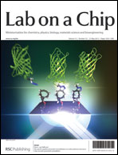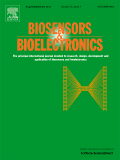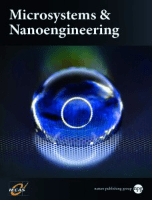
LAB ON A CHIP
Scope & Guideline
Catalyzing Breakthroughs in Biochemistry and Bioengineering
Introduction
Aims and Scopes
- Microfluidic Device Development:
The journal emphasizes the design, fabrication, and optimization of microfluidic devices, including novel materials, techniques, and methodologies to enhance device performance. - Biomedical Applications:
Research published in LAB ON A CHIP frequently focuses on biomedical applications, including organ-on-chip models, drug delivery systems, and diagnostic tools that leverage microfluidics for improved healthcare outcomes. - Integration of Technologies:
The journal highlights the integration of microfluidics with other technologies such as biosensors, imaging systems, and AI for enhanced functionality and efficiency in various applications. - Single-Cell Analysis:
A significant area of focus includes techniques for single-cell manipulation, analysis, and characterization, which are crucial for understanding cellular heterogeneity and responses. - Environmental and Food Safety:
The journal also covers applications of microfluidics in environmental monitoring and food safety, exploring innovative solutions for pathogen detection and contamination analysis.
Trending and Emerging
- AI and Machine Learning Integration:
The integration of AI and machine learning into microfluidic systems is a rapidly growing trend, facilitating enhanced data analysis, predictive modeling, and automation of experimental processes. - Point-of-Care Diagnostics:
There is an increasing emphasis on developing portable and efficient microfluidic devices for point-of-care diagnostics, particularly in response to global health challenges like the COVID-19 pandemic. - 3D and 4D Microfluidic Systems:
Research on 3D and 4D microfluidic systems is gaining momentum, allowing for more complex and physiologically relevant models that can better mimic human organ systems. - Sustainable Microfluidics:
The trend towards sustainability is evident with research focused on developing eco-friendly materials and processes for microfluidic device fabrication and operation. - Multimodal Systems for Drug Testing:
Emerging themes include the use of microfluidics in multimodal systems for drug testing and screening, incorporating various analytical techniques to assess drug efficacy and safety.
Declining or Waning
- Traditional Microfluidic Techniques:
Older microfluidic techniques that do not incorporate advancements such as AI or machine learning are becoming less common, as researchers seek more efficient and automated solutions. - Static Microfluidic Systems:
The focus on static or passive microfluidic systems is waning as dynamic systems that allow for real-time monitoring and responsive manipulation gain more traction. - Basic Fluid Mechanics Studies:
Studies that primarily focus on fundamental fluid mechanics without application to specific biomedical or technological contexts are seeing reduced interest, as the field shifts towards practical, application-driven research. - Conventional Cell Culture Methods:
Research using conventional two-dimensional cell culture methods is declining in favor of more advanced microphysiological systems that better mimic in vivo environments. - Legacy Detection Methods:
Older detection methods that do not utilize modern advancements in biosensing or imaging technologies are being overshadowed by innovative techniques that offer greater sensitivity and specificity.
Similar Journals

Annual Review of Biomedical Data Science
Empowering Innovations in Biomedical Data ScienceAnnual Review of Biomedical Data Science, published by ANNUAL REVIEWS, stands as a premier journal in the fields of Biomedical Engineering, Biochemistry, Genetics, and Cancer Research, with an impressive Q1 ranking across these categories in 2023. With its ISSN and e-ISSN both assigned as 2574-3414, this journal serves as a critical resource for researchers, professionals, and students looking to delve into comprehensive reviews of the rapidly evolving landscape of biomedical data science. The journal's scope includes the intersection of data science methodologies and biomedical applications, making it essential for those aiming to stay at the forefront of innovations that drive advancements in healthcare and medical research. Although it currently does not provide open access options, its commitment to high-quality research and its robust rankings—placing it in the 94th percentile in its field—underscore its significance and credibility in the academic community. Operating from the United States, with its offices located in Palo Alto, CA, this journal is a vital contributor to the discourse on the integration of data science within biomedical fields, fostering collaboration and knowledge dissemination among scholars worldwide.

BIOSENSORS & BIOELECTRONICS
Empowering Scientific Dialogue in Biomedical EngineeringBIOSENSORS & BIOELECTRONICS, published by Elsevier Advanced Technology, is at the forefront of research and innovation in the realms of biomedical engineering, biophysics, and biotechnology. Established in 1990, this esteemed journal has established itself as a premier platform, receiving a prestigious Q1 ranking across multiple categories, including Electrochemistry and Nanoscience, reflecting its critical impact on advancing scientific knowledge and technology. With an impressive range of topics, including the latest trends in biosensor development and bioelectronic application, it serves as an invaluable resource for researchers, professionals, and students alike, facilitating collaborative dialogue and innovative solutions. Though primarily subscription-based, the journal is accessible from its UK headquarters in Oxford, promising rigorous peer-reviewed articles that inform future trends and applications in this dynamic field.

Bio-Design and Manufacturing
Unveiling the Science of Efficient Bio-ManufacturingBio-Design and Manufacturing, published by SPRINGER HEIDELBERG, is a pioneering journal that stands at the forefront of innovation in the fields of Biomedical Engineering, Biotechnology, Industrial and Manufacturing Engineering, and Materials Science. With its ISSN 2096-5524 and E-ISSN 2522-8552, this journal has established itself as a leading platform for disseminating cutting-edge research and advancements that merge biological principles with manufacturing processes, emphasizing sustainable and efficient practices. It has garnered recognition in the 2023 category quartiles, boasting a Q1 rank in all its relevant fields, which underscores its significance and impact—evident from its prime Scopus rankings that place it within the top percentiles of numerous engineering and materials science disciplines. Researchers, professionals, and students alike benefit from the wealth of knowledge presented in this journal, making it an essential resource for those seeking to enhance their understanding of bio-design applications and innovation in manufacturing processes.

ACS Sensors
Driving breakthroughs in bioengineering and instrumentation.ACS Sensors, published by the American Chemical Society, is a premier journal focusing on the rapidly evolving field of sensors and sensing technologies. With an ISSN of 2379-3694, it has established itself as a key resource for researchers and professionals in bioengineering, fluid flow, instrumentation, and process chemistry. The journal holds a remarkable Q1 ranking across multiple categories, indicating its influential position within the academic community, with Scopus rankings placing it in the top echelons of its fields. Since its inception in 2016, ACS Sensors has provided high-quality, peer-reviewed research that drives innovation and application in sensor technology. The journal encourages submissions of original research articles, reviews, and technical notes that advance the understanding of sensing systems, showcasing novel methodologies and applications. While currently operating under a subscription model, the journal is committed to enhancing accessibility to cutting-edge discoveries. By fostering a collaborative environment for scientists and engineers, ACS Sensors is vital in bridging the gap between theory and practical applications, making it an essential read for those engaged in sensor development and application across various disciplines.

Materials
Catalyzing innovation through accessible research in materials.Materials is an esteemed journal published by MDPI, dedicated to advancing the fields of Condensed Matter Physics and Materials Science. With its commitment to Open Access since its inception in 2008, the journal has made significant strides in disseminating high-quality research globally, allowing researchers, professionals, and students easy access to cutting-edge studies without financial barriers. Hailing from Switzerland, the journal has shown remarkable growth and prominence, currently ranked in the Q2 quartile in its categories according to the latest assessments, which highlights its impact within the community. As the journal converges its focus from 2008 to 2024, it aims to continually foster a robust exchange of knowledge on innovative materials and their applications, thereby supporting the evolving landscape of science and technology. With an E-ISSN of 1996-1944 and a user-friendly platform, Materials is poised to be a leading choice for scholars eager to contribute to and engage with pioneering research.

Microsystems & Nanoengineering
Driving Innovation Through Cutting-Edge ResearchMicrosystems & Nanoengineering, published by SpringerNature, stands at the forefront of advancing knowledge in the fields of atomic and molecular physics, condensed matter physics, electrical and electronic engineering, and materials science. With an impressive impact factor and categorized in Q1 across multiple prestigious fields in 2023, this journal not only provides a platform for high-quality research but also reflects the vitality of innovations within these disciplines. Since its transition to Open Access in 2015, it has significantly broadened accessibility for researchers, professionals, and students globally, facilitating the dissemination of groundbreaking findings. Addressed in the United Kingdom, with a focus on interdisciplinary collaboration, Microsystems & Nanoengineering aims to foster connections between theoretical advancements and practical applications, serving as a crucial resource for those engaged in cutting-edge nanoscale technologies and microsystems development. Immerse yourself in the latest studies and engage with the vibrant community that shapes the future of science and engineering.

Innovation and Emerging Technologies
Pioneering New Paths in Technology and InnovationInnovation and Emerging Technologies, published by WORLD SCIENTIFIC PUBL CO PTE LTD, is a cutting-edge journal dedicated to advancing knowledge in the fields of technology, innovation, and their applications across various sectors. With ISSN 2737-5994 and E-ISSN 2810-9007, this journal aims to serve as a comprehensive platform for scholarly research and practical insights, fostering collaboration among researchers, professionals, and students alike. Although specific metrics such as impact factor and H-index are currently unavailable, the journal is poised to make significant contributions to the discourse surrounding emerging technologies and their societal implications. Emphasizing the importance of accessibility, the journal offers a range of options for engaging with its content, encouraging a wide readership and promoting the exchange of innovative ideas. Situated in Singapore, the journal reflects the region's commitment to technological advancement and global research, making it a pivotal resource for those dedicated to exploring the future of technology.

Journal of Optoelectronic and Biomedical Materials
Bridging Disciplines for a Healthier TomorrowJournal of Optoelectronic and Biomedical Materials (ISSN: 2066-0049) is a peer-reviewed academic journal published by the renowned VIRTUAL INSTITUTE OF PHYSICS, dedicated to advancing research in the interdisciplinary fields of optoelectronics and biomedical materials. This journal aims to provide a platform for researchers, professionals, and students to disseminate their findings on innovative materials and technologies that harness optical and electronic properties for biomedical applications. With an increasing significance in medical diagnostics, therapeutic approaches, and advanced materials science, the Journal of Optoelectronic and Biomedical Materials underscores the importance of facilitating collaboration among scientists from diverse fields. While currently operating under a traditional access model, the journal aspires to enhance global accessibility to cutting-edge research contributions that will drive the future of technology in healthcare and biotechnology. As a growing reference point in its domain, it encourages submissions that can advance these crucial scientific areas.

Nature Biomedical Engineering
Connecting Engineers and Scientists for Global ImpactNature Biomedical Engineering is a premier journal published by NATURE PORTFOLIO, focusing on innovative research at the intersection of engineering and biomedical sciences. With an ISSN of 2157-846X, this journal aims to disseminate groundbreaking studies that advance the field of bioengineering, biotechnology, and medical applications. Since its inception in 2017, it has rapidly earned a reputation for excellence, consistently achieving a Q1 ranking in various categories including Bioengineering and Biomedical Engineering, and receiving acclaim in prestigious Scopus rankings, boasting top positions in the fields of Computer Science Applications and Medicine. The journal operates under a rigorous peer-review process, ensuring that all published articles contribute substantially to the existing body of knowledge. Furthermore, it facilitates a broad accessibility model for researchers and practitioners, bolstering collaboration and innovation within the global scientific community. Nature Biomedical Engineering is not just a publication; it serves as a vital platform for thought leadership in the transformative field of biomedical engineering.

Progress in Biomedical Engineering
Bridging disciplines to revolutionize healthcare outcomes.Progress in Biomedical Engineering, published by IOP Publishing Ltd, is a premier open-access journal that serves as a vital platform for the dissemination of innovative research in the field of biomedical engineering. With an impressive Q1 classification in the Biomedical Engineering category for 2023, this journal has established itself as a significant contributor to the advancement of engineering solutions that improve healthcare outcomes. Recognized for its high-quality and impactful publications, it ranks 51st out of 303 in its field on Scopus, placing it in the 83rd percentile. The journal aims to foster interdisciplinary collaboration and introduce pioneering methodologies and technologies that bridge the gap between engineering and medicine. By providing a pathway for rapid communication of fundamental and applied research, Progress in Biomedical Engineering is dedicated to shaping the future of healthcare technology. Access to its content ensures that researchers, professionals, and students remain at the forefront of biomedical innovation.